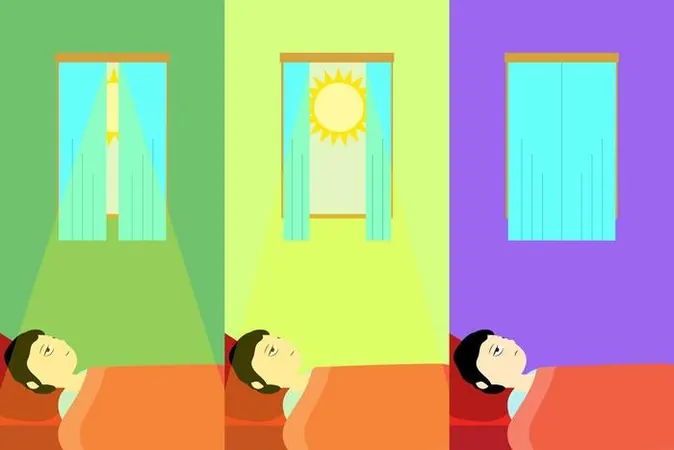
Unlocking the Secrets to a Healthier Life Through Light and Urban Design
2025-06-08
Author: Benjamin
Is Light the Key to a Better Morning?
Imagine waking up feeling entirely refreshed and ready to tackle the day. But with smartphones buzzing and the demands of modern life intruding on our peace, capturing that elusive good night's sleep seems almost impossible. However, a groundbreaking study suggests the key to waking up rejuvenated may lie not just in your sleep routine, but in the natural light around you and the way your city is designed.
Natural Light: A Game-Changer for Your Mornings
Recent findings in the journal *Building and Environment* reveal that exposure to natural light, especially in the moments leading up to wakefulness, significantly affects how alert you feel. Researchers in Japan, led by Professor Daisuke Matsushita, conducted experiments with participants to discern the impact of different lighting conditions on morning wakefulness. They discovered that those who gradually awakened to natural light emerged feeling more alert and less groggy.
Transforming City Life with Human-Centered Design
But the effects of light extend beyond your bedroom—urban design is reshaping our day-to-day existence. The emerging trend of 'human-centered' urban planning focuses on creating environments that enrich the lives of their inhabitants. This includes ensuring our neighborhoods foster safety, connection, and tranquility—free from the disturbances of noise and pollution that so many city dwellers face.
The Connection Between Urban Design and Well-Being
Urban environments dictate our daily habits: from how far we walk to reach a store to the comfort of our surroundings. A well-designed city can promote mental well-being and a greater sense of community. The United Nations has recognized this in its Sustainable Development Goals, which advocate for inclusive, safe, and resilient cities.
What Do Renters Truly Want?
For those renting homes, the quality of their immediate environment often determines their living experience. Research shows that factors like noise levels and safety rank high on the list of priorities for renters—often overshadowing traditional concerns such as property size.
Revolutionizing Rent Through Data-Driven Insight
A recent study employed machine learning to analyze street-level images, revealing how neighborhood aesthetics contribute to rental value. This research produced a hedonic price model that delineates how attributes such as proximity to parks and public transit play a crucial role in determining rent.
Building Affordable, Human-Centric Housing
For many cities grappling with housing affordability, these revelations hold critical significance. By focusing on features that improve the living environment—like safety and natural light—planners and landlords can create desirable housing without inflating costs.
The Path Forward: Better Living Through Thoughtful Design
Ultimately, embracing human-centered design can align with broader goals of sustainability, allowing cities to foster healthier, happier lives for their residents. Even something as simple as the morning light in your bedroom can signal a transformative approach to urban living—one where comfort, accessibility, and well-being intertwine seamlessly.
As we continue to merge scientific insights with urban planning, a brighter, more sustainable future is on the horizon, ensuring that our cities are not just spaces we live in, but places that enhance our overall quality of life.









 Brasil (PT)
Brasil (PT)
 Canada (EN)
Canada (EN)
 Chile (ES)
Chile (ES)
 Česko (CS)
Česko (CS)
 대한민국 (KO)
대한민국 (KO)
 España (ES)
España (ES)
 France (FR)
France (FR)
 Hong Kong (EN)
Hong Kong (EN)
 Italia (IT)
Italia (IT)
 日本 (JA)
日本 (JA)
 Magyarország (HU)
Magyarország (HU)
 Norge (NO)
Norge (NO)
 Polska (PL)
Polska (PL)
 Schweiz (DE)
Schweiz (DE)
 Singapore (EN)
Singapore (EN)
 Sverige (SV)
Sverige (SV)
 Suomi (FI)
Suomi (FI)
 Türkiye (TR)
Türkiye (TR)
 الإمارات العربية المتحدة (AR)
الإمارات العربية المتحدة (AR)